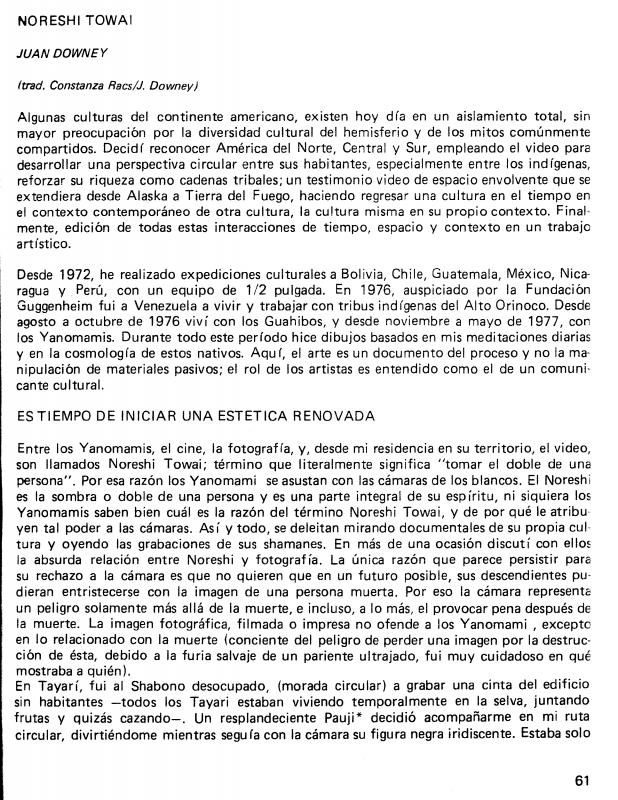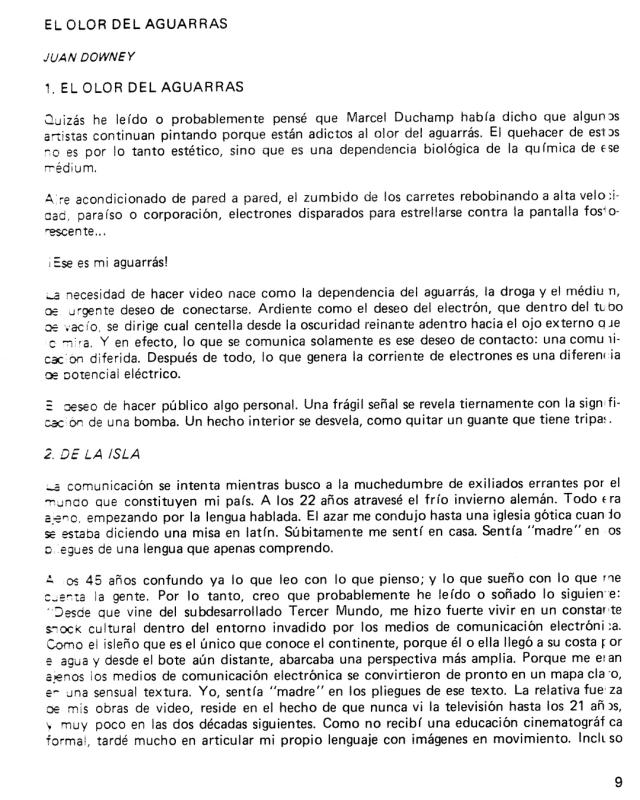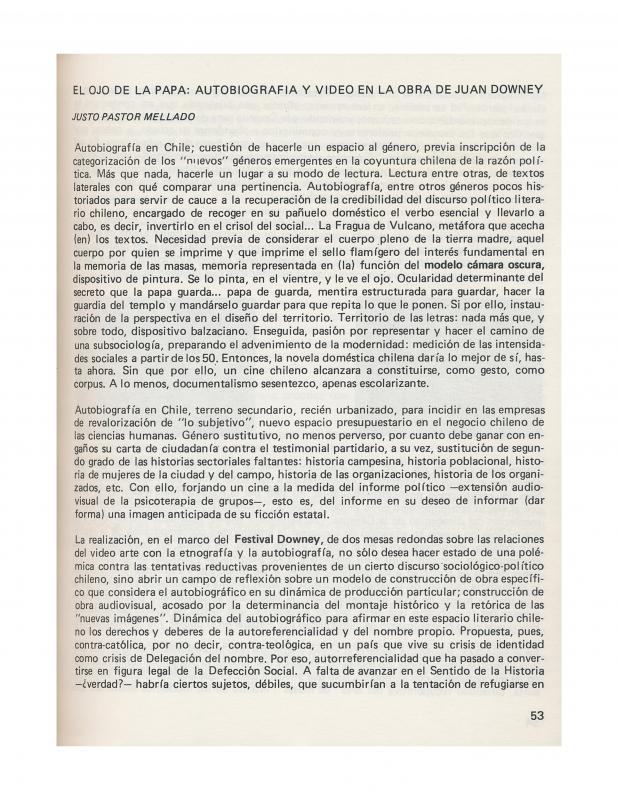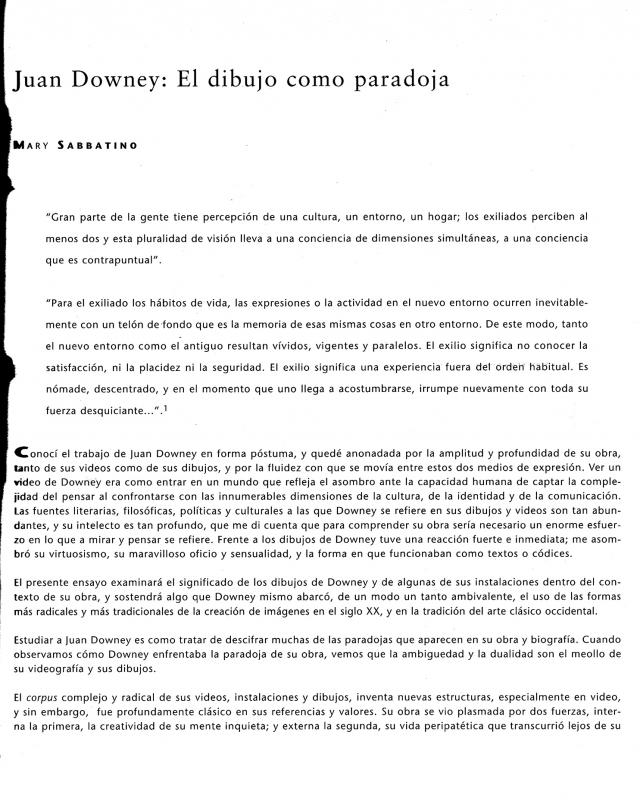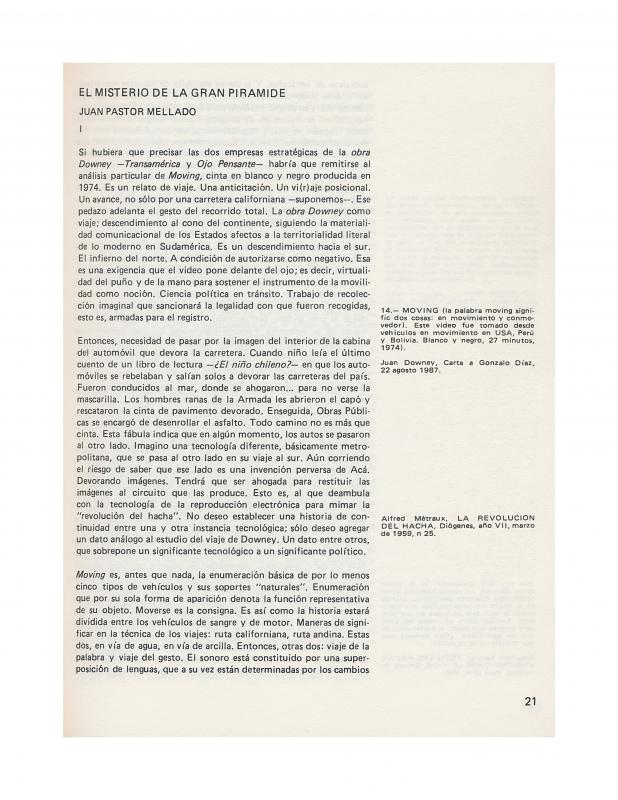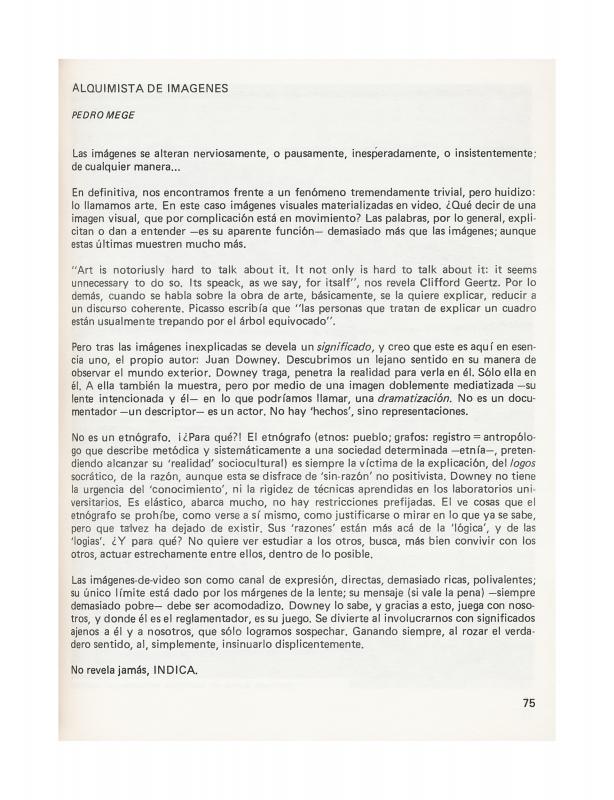The video artist Néstor Olhagaray (1946–2020) wrote “A propósito de ‘Yanomami’ (1977)” (About ‘Yanomami’ [1977]), an analysis of a video by Juan Downey that has been discussed from various perspectives. For example, the anthropologist Eric Michaels (1948–1988)—with whom Downey worked on the video The Abandoned Shabono (1978, 27 min., b/w, sound)—wrote: “Like watching ourselves watching the Yanomami watching us” [see the ICAA Digital Archive (doc. no. 735781)]. This text reflects on the use of video from an artistic and anthropological perspective. Downey expressed his experience with the Yanomami (in Brazil and Guyana) in “Noreshi Towai” (doc. no. 735718) and in a discussion about his involvement with video, “El olor del aguarrás” (doc. no. 735687">735687), which relates to Olhagaray’s views in this text, available in the ICAA Digital Archive.
The texts mentioned above appeared in the catalogue for Festival Downey: Video porque Te Ve, the exhibition presented at the Galería Visuala (Santiago, 1987). The program for this event included two discussions about the relationship between video art, ethnography, and autobiography. The critic and curator Justo Pastor Mellado (b. 1949) presented his views on these subjects in the text “El ojo de la papa: autobiografía y video en la obra de Juan Downey” (doc. no. 735710). Participants in those debates included authors from various fields: the writer Diamela Eltit (b. 1949), the North American curator Anne Hoy, the intellectual Patricio Marchant (1939–1990), the Chilean and North American anthropologists, respectively, Pedro Mege and Eric Michaels (1948–1988), the researcher José Pérez de Arce (b. 1950), and the Chilean archeologist who lived in the United States, Constantino Torres. They all discussed the complexity of Downey’s work, which included his prints, paintings, and drawings. [On the subject of this work, see “Juan Downey: el dibujo como paradoja” (doc. no. 739194) by Mary Sabbatino. Regarding other texts in the catalogue, see “El misterio de la Gran Pirámide” (doc. no. 735702) by Mellado; “Juan Downey y el video espejo” (doc. no. 735687">735687) by Pérez de Arce; “Video arte y autobiografía” (doc. no. 735821) by Marchant; “Videos de Juan Downey: arte como experiencia” (doc. no. 735754) by Torres; and “Alquimista de imágenes” (doc. no. 735772) by Mege.]
As a self-taught artist, Downey’s career was characterized by medial explorations that allowed him to put together an unprecedented body of work. After graduating with a degree in architecture when he was 22 years old, he left Chile and went to Germany, studied painting in Spain, and became interested in printmaking in France. He eventually settled in the Unites States, from where he traveled to other countries, seeking to know other cultures as an integral part of his personal poetics. His final works include the series “The Thinking Eye,” “The Looking Glass,” “Information Withheld,” “J.S Bach,” and the video “Hard Times and Culture, Part One, Vienna ‘Fin de Siècle’,” reviewed by John Hanhardt (b. 1945), the art historian and curator who specializes in movies and media arts, in “Reelaborando la modernidad de Juan Downey en The Thinking Eye” (doc. no. 739203).

